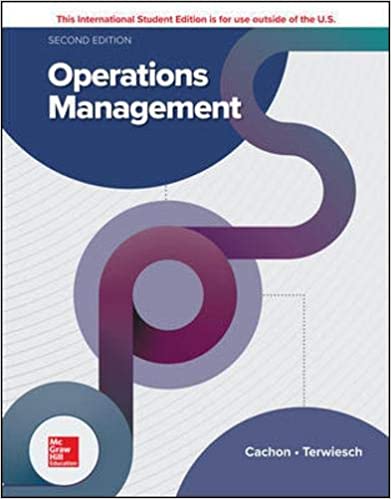Keuka Studies does custom metal sculptures of horses and other animals. A horse sculpture is composed of
Question:
Keuka Studies does custom metal sculptures of horses and other animals. A horse sculpture is composed of numerous parts. They use a lathe to construct two types of parts. The “Body” part is used to support the torso of the horse and the “Leg” part is used to support the legs. Each horse sculpture needs 1 Body part and 4 Leg parts. Switching between either of the types of parts requires 25 minutes. Once ready to produce, the lathe produces a Body part in 4 minutes and a single Leg part in 2 minutes. The lathe only makes horse parts. For parts (a)–(d) assume Keuka operates a cyclic schedule in which they make 100 Body parts and then 400 Leg parts. Furthermore, assume the lathe is the bottleneck.
a. What is the maximum number of horse sculptures Keuka can make per hour?
b. What is the utilization (%) of the lathe?
c. Suppose Keuka is demand-constrained and they have 1 worker who is able to assemble a horse sculpture in 16 minutes. What is the average inventory of Body parts?
d. Suppose Keuka is demand-constrained and they have 1 worker who is able to assemble a horse sculpture in 16 minutes. What is the average inventory of Legs?
e. Suppose Keuka is demand-constrained and they have 1 worker who is able to assemble a horse sculpture in 16 minutes. If Keuka designs a cyclic schedule for the lathe, how many Body parts should they make in each batch so as to minimize inventory while not constraining the flow through assembly?
f. Suppose Keuka is demand-constrained and they have 1 worker who is able to assemble a horse sculpture in 16 minutes. If Keuka designs a cyclic schedule for the lathe, how many Legs should they make in each batch so as to minimize inventory while not constraining the flow through assembly?
Step by Step Answer:

Operations Management
ISBN: 9781260547610
2nd International Edition
Authors: Gerard Cachon, Christian Terwiesch





